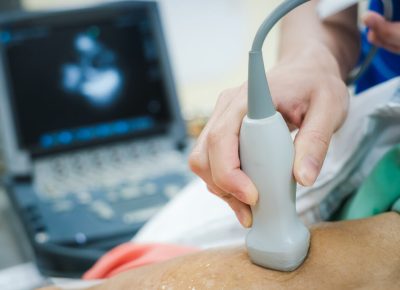-
Mon -Sun: 10.00Am - 2.00Pm
& 05.00Pm - 9.00 Pm
Taking care of you, from the inside out
Taking care of you, from the inside out
Home || Our Services || Ultra Sound
Sonography, another name for ultrasound, is a noninvasive medical imaging method that has completely changed the diagnostics industry. It creates real-time images of the body’s internal structures using high-frequency sound waves. This painless and safe treatment is essential for the early diagnosis, monitoring, and identification of a number of medical disorders.
Non-Invading Character:- Since ultrasound is a noninvasive imaging method, neither radiation therapy nor surgery are required. This makes it a popular and safe diagnostic tool, particularly for evaluating the pelvic and abdominal organs and keeping an eye on pregnancies.
Adaptability:- The heart, liver, kidneys, uterus, and growing fetus are just a few of the organs and tissues that may be seen with ultrasound, which is an extremely flexible tool. Because of its adaptability, medical practitioners can get precise pictures that give them a complete picture of the patient’s condition.
Imaging in Real Time:- The real-time imaging capabilities of ultrasonography are among its main advantages. This dynamic feature helps with monitoring and diagnosis by enabling medical professionals to see movement, blood flow, and organ function in real time.
Maternal Health:- Prenatal care frequently uses ultrasound to track the fetus’s growth during pregnancy. In addition to giving parents access to pictures of their unborn kid, it assists in determining the baby’s size, position, and general health.
Medical Condition Diagnosis:- A variety of medical disorders, including as kidney and gallstones, tumors, cysts, and anomalies in the reproductive organs, can be diagnosed by ultrasound. It is also used in cardiology to evaluate blood flow and heart function.


Tomographic Imaging:- Throughout pregnancy, ultrasound is frequently used to track fetal growth, determine gestational age, find multiple pregnancies, and spot any possible anomalies.
Exams of the abdomen and pelvis:- Abdominal and pelvic organs including the liver, gallbladder, kidneys, uterus, and ovaries are examined with ultrasound technology.
Echocardiography, or cardiac ultrasound:- A specific type of ultrasound called echocardiography is used to evaluate the anatomy and physiology of the heart in order to identify and treat cardiac problems.
Ultrasound Vascular:- By examining blood vessels to find obstructions or irregularities in blood flow, this kind of ultrasound helps diagnose diseases like arterial disease and deep vein thrombosis (DVT).
Instructions for Health Care Procedures:- To ensure accuracy and reduce risk, ultrasound is frequently used to guide medical procedures like fluid collection drainage and biopsies.
Choose the best for yourself. Book your appointment today!

Ultrasound is considered safe, with no known harmful effects on the baby or mother when used as recommended by healthcare professionals.
Gender determination is typically possible around 1820 weeks of pregnancy, but accuracy may vary.
Yes, common types include transvaginal, abdominal, and 3D/4D ultrasounds, each serving different purposes.
While ultrasound is a valuable tool, it may not detect all birth defects. Some conditions may require additional testing.
The duration varies but is generally around 2030 minutes. Longer scans may be needed for more detailed assessments.